Abstract
1. The effects of electrical stimulation and solutions containing a high concentration of potassium on the efflux of [14C] glycine from slices of rat spinal cord have been studied.
2. Slices of cord were incubated with [14C] glycine which rapidly accumulated in the tissue. The slices were then superfused in a small chamber and the radioactivity released from the tissue was measured. After superfusion for 60 min, 98% of the radioactivity remaining in the tissue was present as unchanged glycine.
3. The spontaneous efflux of [14C] glycine consisted of an initial rapid phase followed by a much slower release of [14C] glycine. After superfusion for 60 min, more than 65% of the radioactivity taken up during the incubation period was retained by the tissue.
4. When the slices were depolarized by electrical stimulation or by solutions containing a high concentration of potassium (40 mM), a striking increase in the efflux of [14C] glycine was produced. This effect was not reduced by the absence of calcium ions in the superfusion medium.
5. Electrical stimulation produced similar increases in the efflux of [3H] GABA and [14C] glutamate from slices of cord but had no significant effects on the efflux of [3H] alanine or [14C] urea.
6. The results are consistent with the suggestion that glycine may be an inhibitory synaptic transmitter substance in the mammalian spinal cord.
Full text
PDF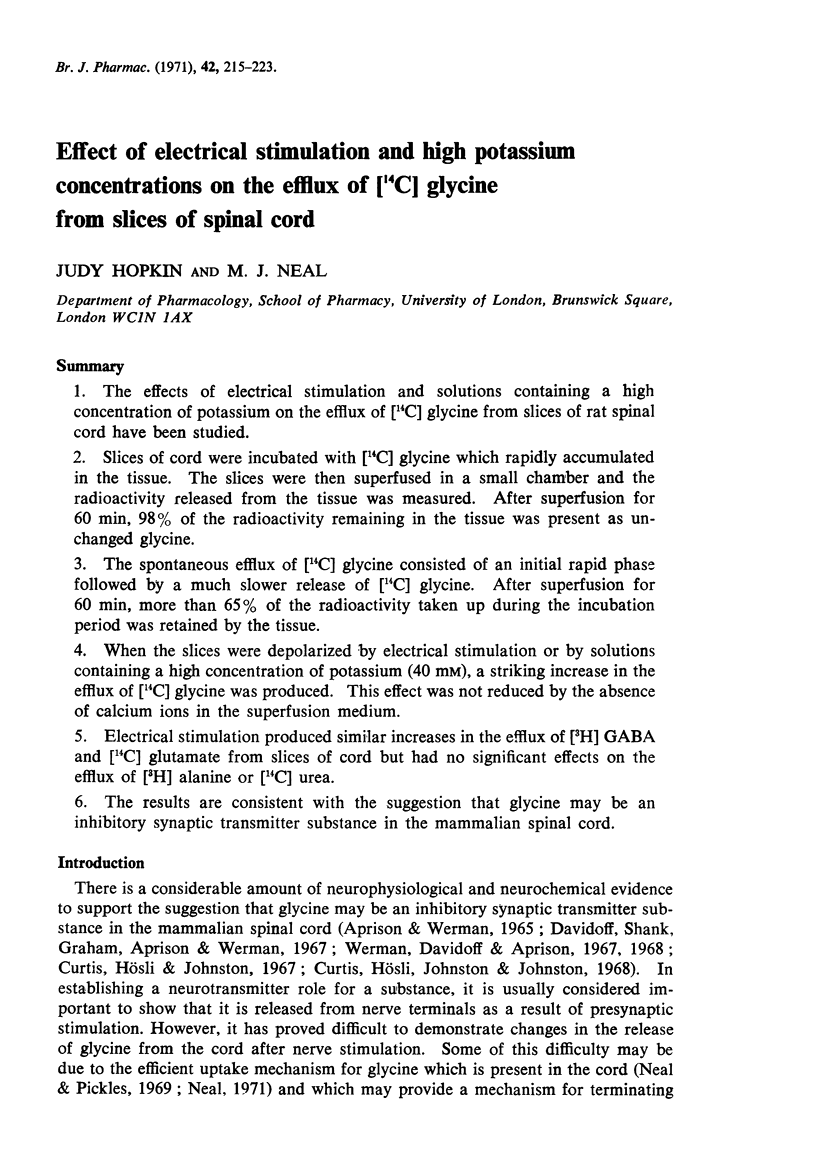
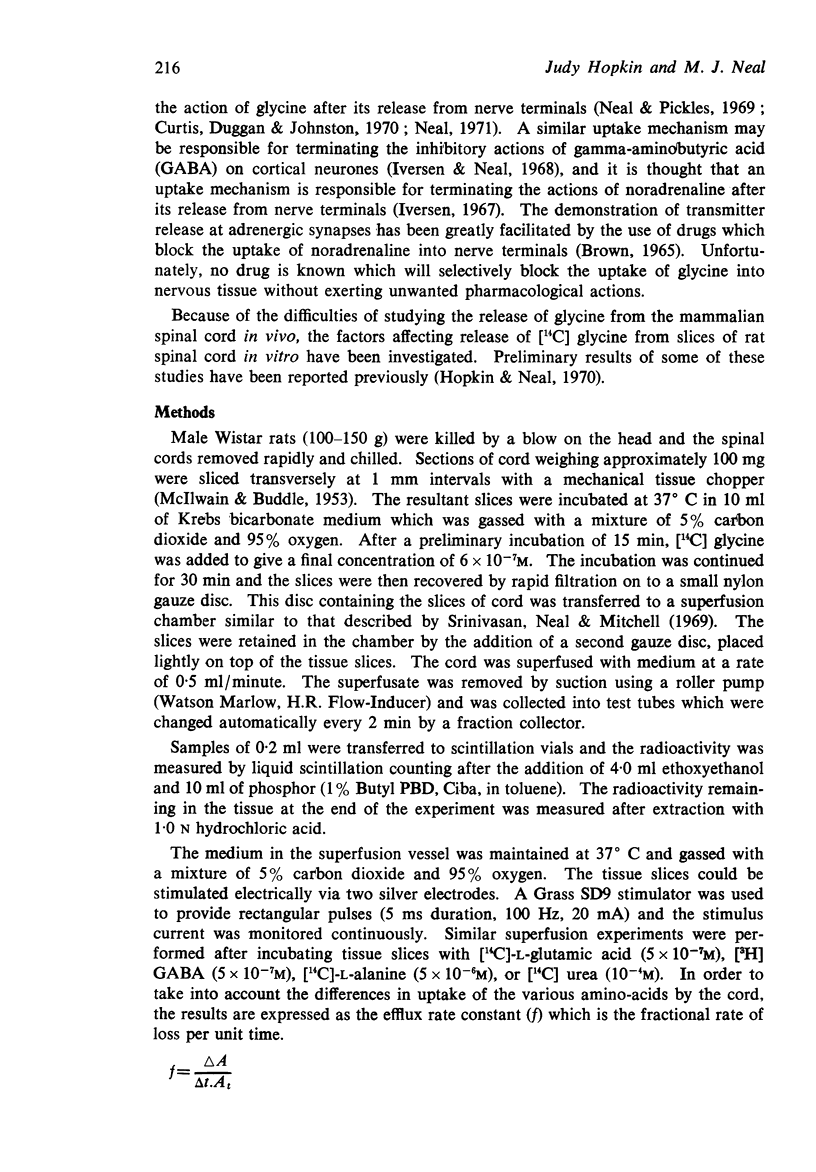
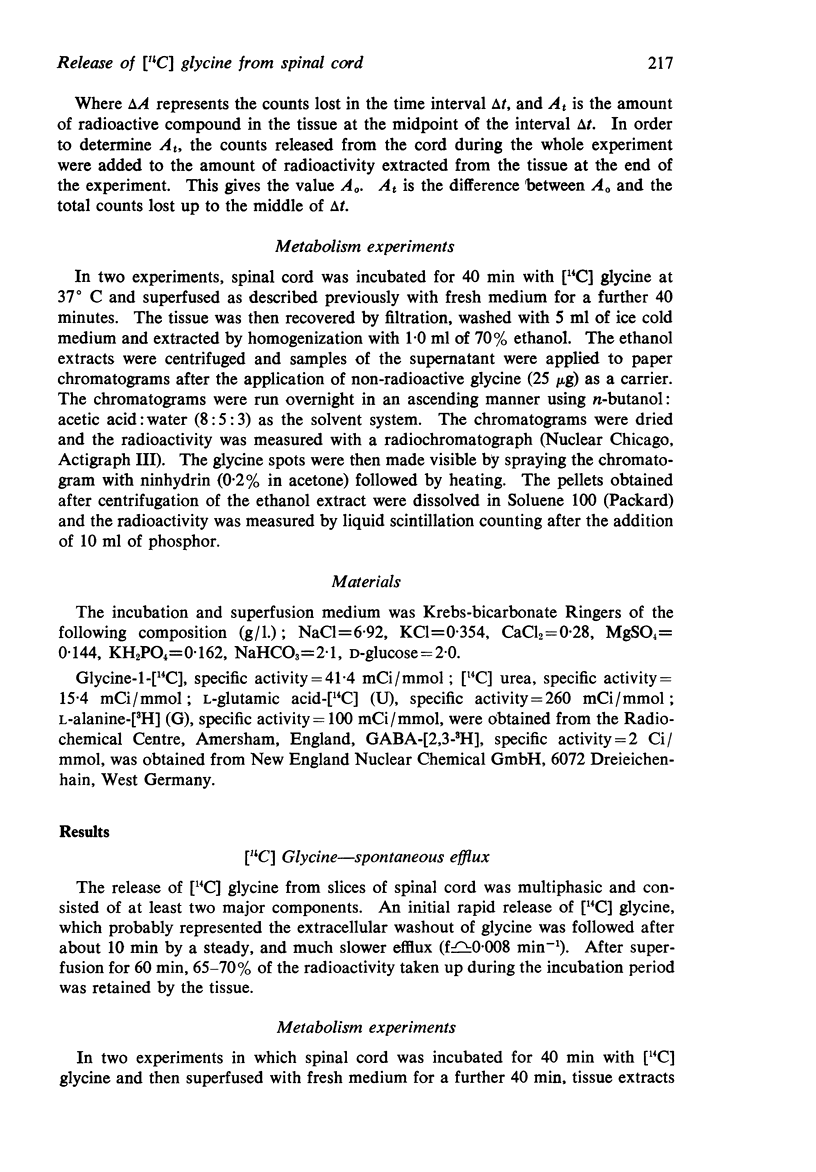
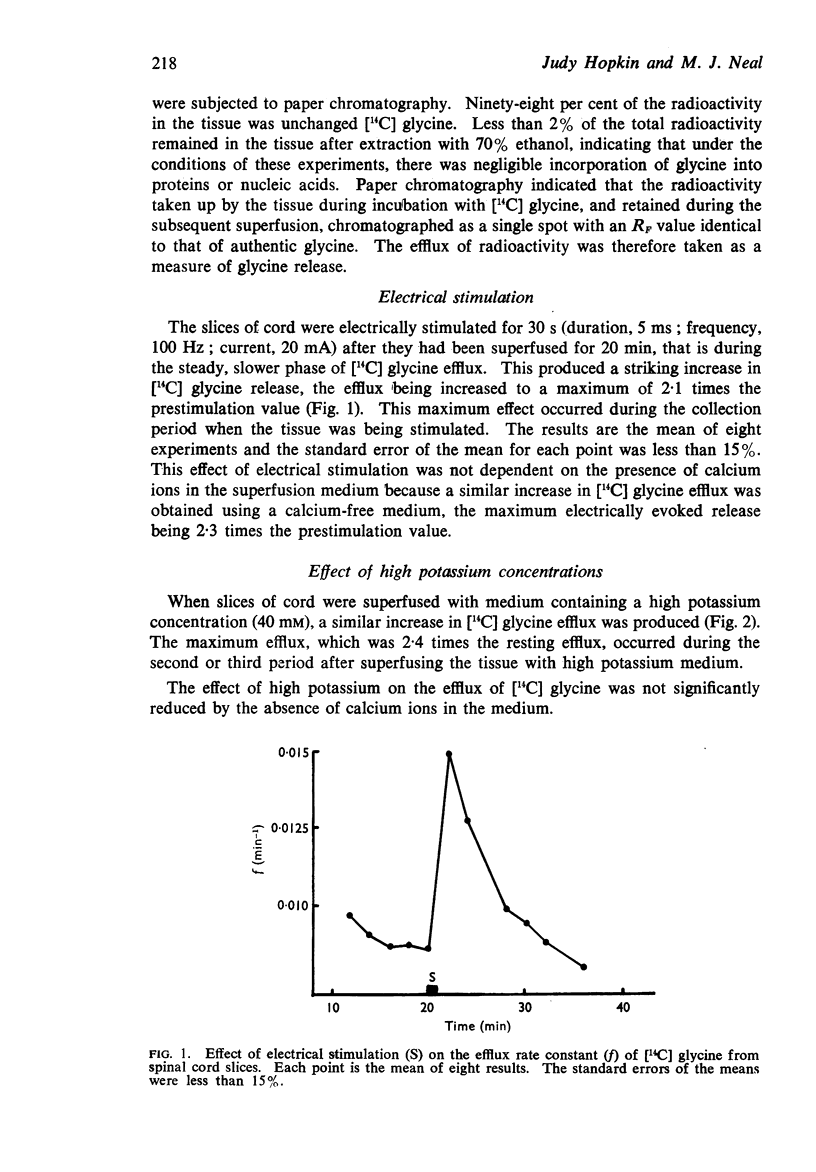
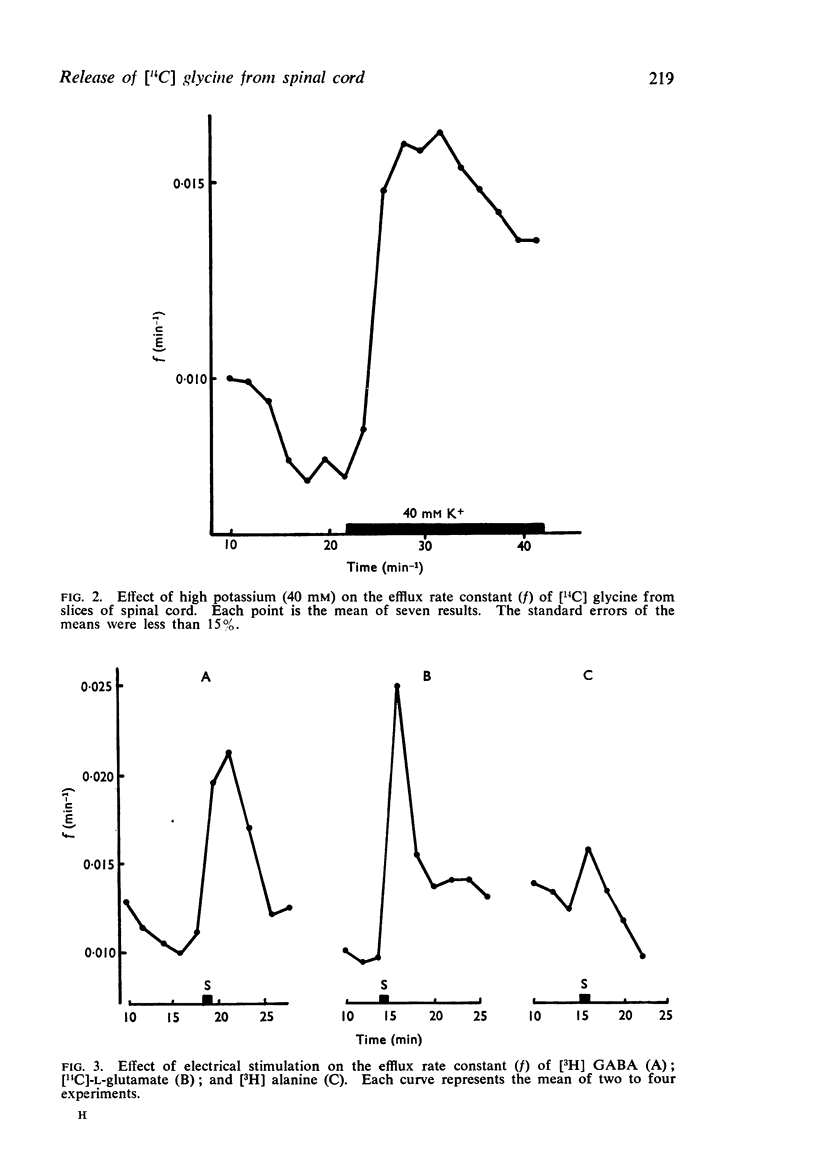
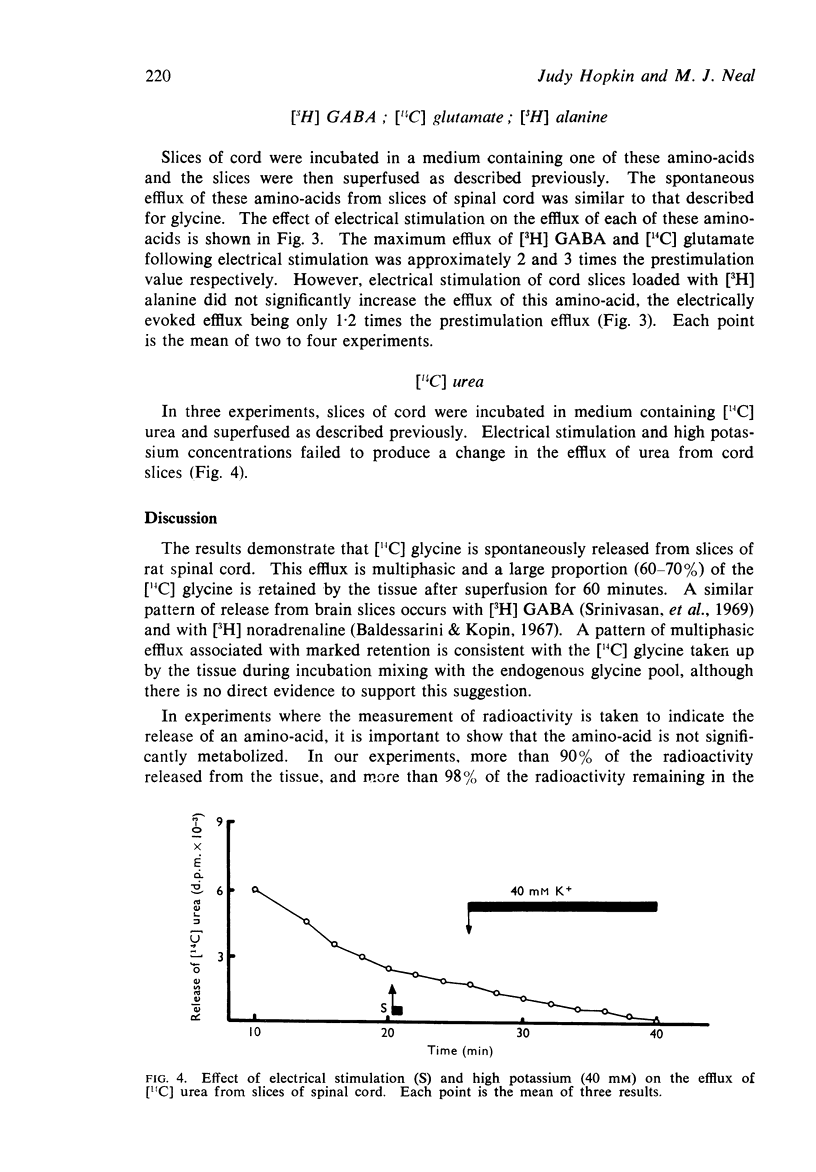
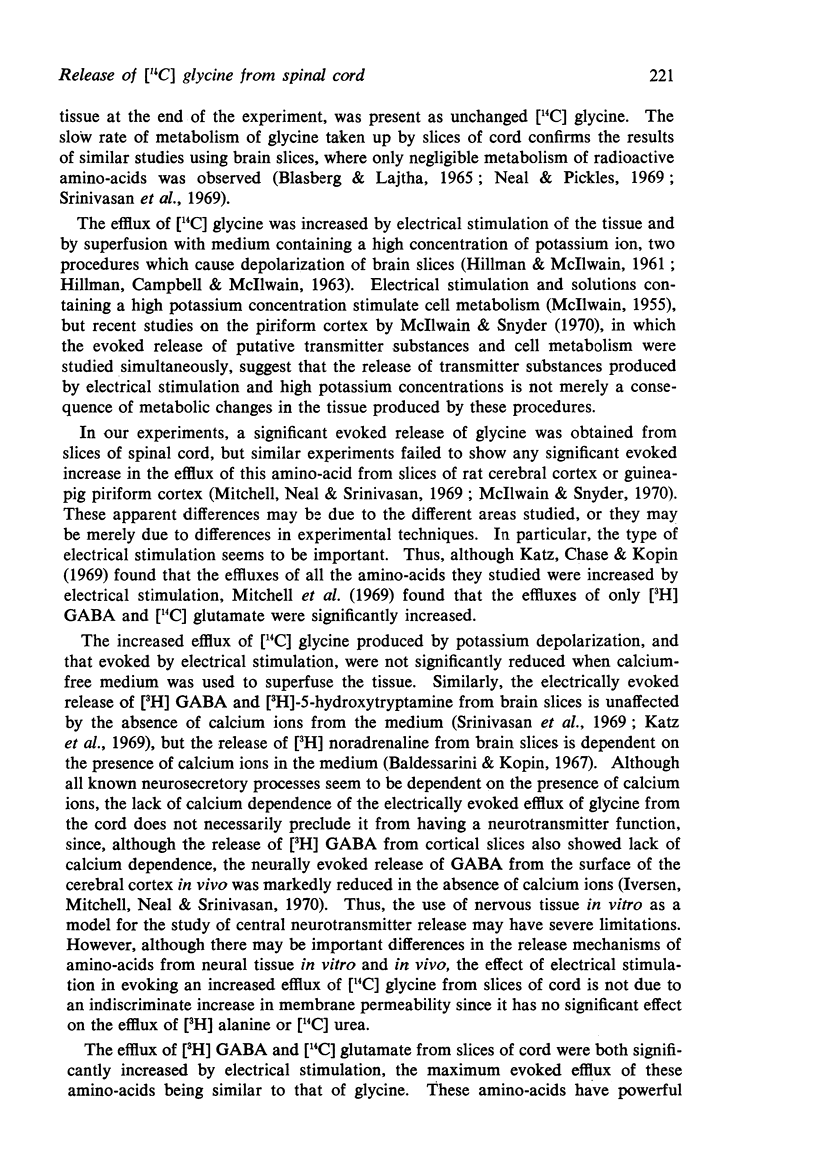
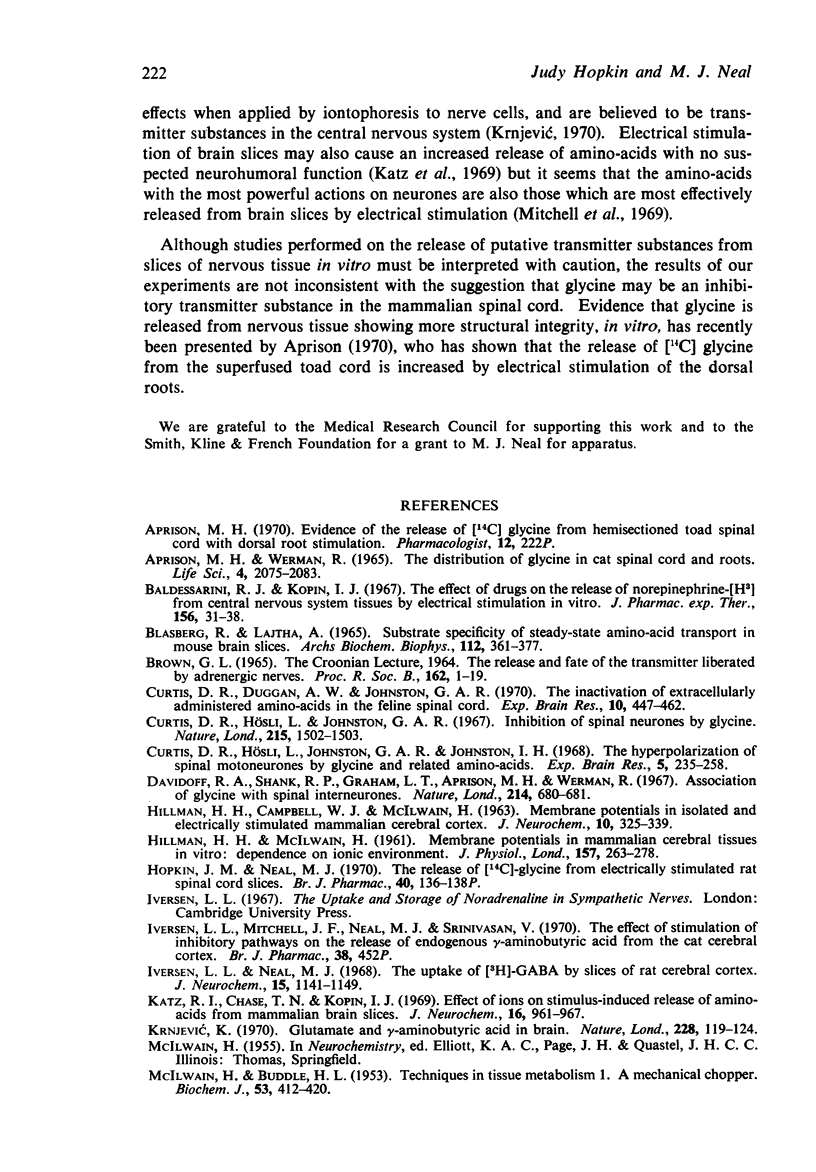
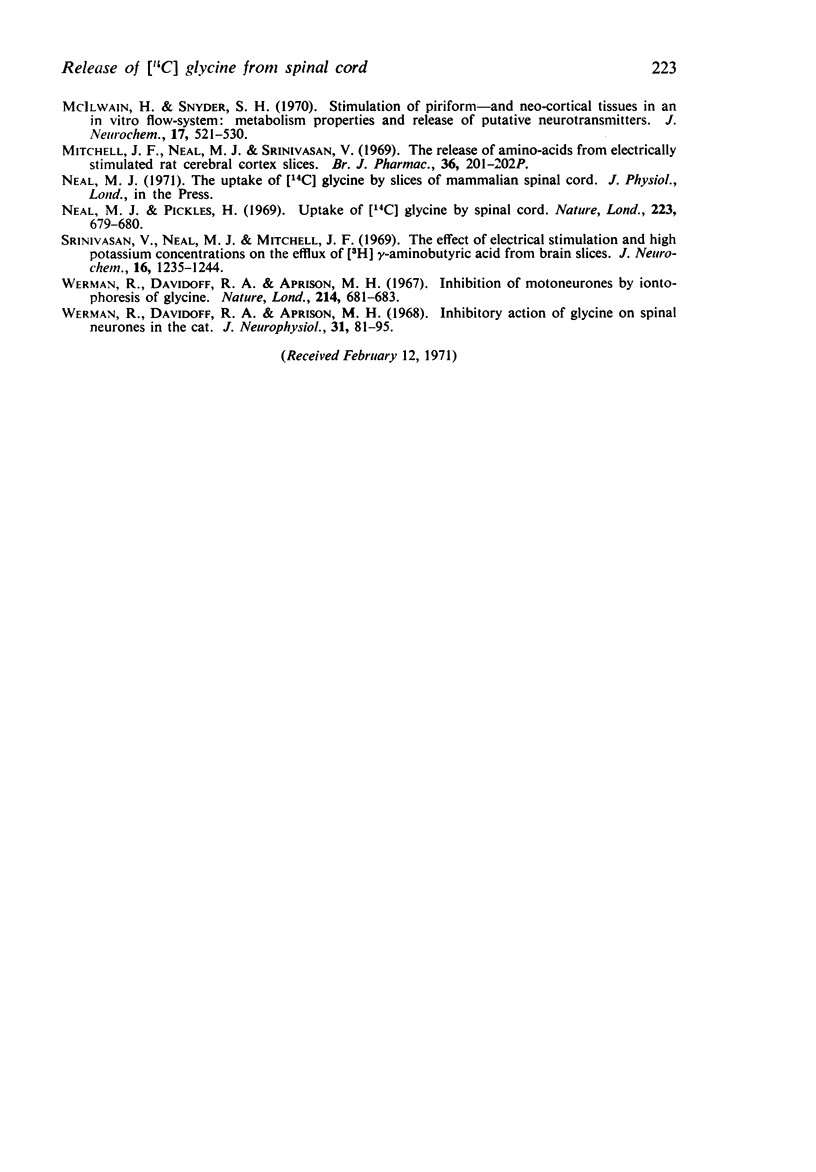
Selected References
These references are in PubMed. This may not be the complete list of references from this article.
- Aprison M. H., Werman R. The distribution of glycine in cat spinal cord and roots. Life Sci. 1965 Nov;4(21):2075–2083. doi: 10.1016/0024-3205(65)90325-5. [DOI] [PubMed] [Google Scholar]
- Baldessarini R. J., Kopin I. J. The effect of drugs on the release of norepinephrine-H from central nervous system tissued by electrical stimulation in vitro. J Pharmacol Exp Ther. 1967 Apr;156(1):31–38. [PubMed] [Google Scholar]
- Curtis D. R., Duggan A. W., Johnston G. A. The inactivation of extracellularly administered amino acids in the feline spinal cord. Exp Brain Res. 1970 Jun 25;10(5):447–462. doi: 10.1007/BF00234262. [DOI] [PubMed] [Google Scholar]
- Curtis D. R., Hösli L., Johnston G. A. Inhibition of spinal neurons by glycine. Nature. 1967 Sep 30;215(5109):1502–1503. doi: 10.1038/2151502a0. [DOI] [PubMed] [Google Scholar]
- Curtis D. R., Hösli L., Johnston G. A., Johnston I. H. The hyperpolarization of spinal motoneurones by glycine and related amino acids. Exp Brain Res. 1968;5(3):235–258. doi: 10.1007/BF00238666. [DOI] [PubMed] [Google Scholar]
- Davidoff R. A., Shank R. P., Graham L. T., Jr, Aprison M. H., Werman R. Association of glycine with spinal interneurones. Nature. 1967 May 13;214(5089):680–681. doi: 10.1038/214680a0. [DOI] [PubMed] [Google Scholar]
- HILLMAN H. H., McILWAIN H. Membrane potentials in mammalian cerebral tissues in vitro: dependence on ionic environment. J Physiol. 1961 Jul;157:263–278. doi: 10.1113/jphysiol.1961.sp006720. [DOI] [PMC free article] [PubMed] [Google Scholar]
- Hopkin J. M., Neal M. J. Thr release of 14C-glycine from electrically stimulated rat spinal cord slices. Br J Pharmacol. 1970 Sep;40(1):136P–138P. [PMC free article] [PubMed] [Google Scholar]
- Iversen L. L., Mitchell J. F., Neal M. J., Srinivasan V. The effect of stimulation of inhibitory pathways on the release of endogenous gamma-aminobutyric acid from the rat cerebral cortex. Br J Pharmacol. 1970 Feb;38(2):452P–453P. [PMC free article] [PubMed] [Google Scholar]
- Iversen L. L., Neal M. J. The uptake of [3H]GABA by slices of rat cerebral cortex. J Neurochem. 1968 Oct;15(10):1141–1149. doi: 10.1111/j.1471-4159.1968.tb06831.x. [DOI] [PubMed] [Google Scholar]
- Katz R. I., Chase T. N., Kopin I. J. Effect of ions on stimulus-induced release of amino acids from mammalian brain slices. J Neurochem. 1969 Jun;16(3):961–967. doi: 10.1111/j.1471-4159.1969.tb08986.x. [DOI] [PubMed] [Google Scholar]
- Krnjević K. Glutamate and gamma-aminobutyric acid in brain. Nature. 1970 Oct 10;228(5267):119–124. doi: 10.1038/228119a0. [DOI] [PubMed] [Google Scholar]
- MCILWAIN H., BUDDLE H. L. Techniques in tissue metabolism. I. A mechanical chopper. Biochem J. 1953 Feb;53(3):412–420. doi: 10.1042/bj0530412. [DOI] [PMC free article] [PubMed] [Google Scholar]
- McIlwain H., Snyder S. H. Stimulation of piriform- and neo-cortical tissues in an in vitro flow-system: metabolic properties and release of putative neurotransmitters. J Neurochem. 1970 Apr;17(4):521–530. doi: 10.1111/j.1471-4159.1970.tb00530.x. [DOI] [PubMed] [Google Scholar]
- Mitchell J. F., Neal M. J., Srinivasan V. The release of amino-acids from electrically stimulated rat cerebral cortex slices. Br J Pharmacol. 1969 May;36(1):201P–202P. [PMC free article] [PubMed] [Google Scholar]
- Neal M. J., Pickles H. G. Uptake of 14C glycine by spinal cord. Nature. 1969 May 17;222(5194):679–680. doi: 10.1038/222679a0. [DOI] [PubMed] [Google Scholar]
- Srinivasan V., Neal M. J., Mitchell J. F. The effect of electrical stimulation and high potassium concentrations on the efflux of (3H) gamma-aminobutyric acid from brain slices. J Neurochem. 1969 Aug;16(8):1235–1244. doi: 10.1111/j.1471-4159.1969.tb05971.x. [DOI] [PubMed] [Google Scholar]
- Werman R., Davidoff R. A., Aprison M. H. Inhibition of motoneurones by iontophoresis of glycine. Nature. 1967 May 13;214(5089):681–683. doi: 10.1038/214681a0. [DOI] [PubMed] [Google Scholar]
- Werman R., Davidoff R. A., Aprison M. H. Inhibitory of glycine on spinal neurons in the cat. J Neurophysiol. 1968 Jan;31(1):81–95. doi: 10.1152/jn.1968.31.1.81. [DOI] [PubMed] [Google Scholar]


